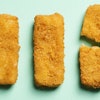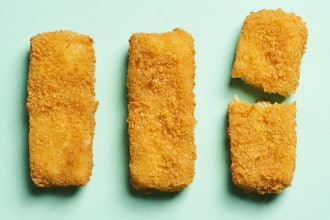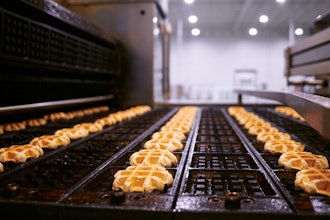Octopus-Inspired Tentacle Robot
A team of Harvard researchers has created an octopus-inspired soft robot that can grip an impressive range of objects. In tests, it picked up everything from a plastic sheet to a yoga ball.
The arm has a flexible, tapered design with suction cups that enable gripping. Previous robots tried mimicked the suction or the movement, but this is the first to do both.
The design is admittedly much less complex than it's natural counterpart. The end effector is controlled by two valves, one that applies pressure to bend the arm, and another for the vacuum that engages the suckers.
The first generation of the work is already in a commercial prototype, Festo's TentacleGripper. Festo is well known for its investment in biomimicry. The TentacleGripper is the first fully-integrated implementation of this technology in a commercial prototype.
The researchers believe their work will improve gripper shape and functionality by optimizing the layout and structure of the suckers. It could also lead to a better understanding of the octopus.
Robot Uses AI to Draw Your Blood
Engineers from Rutgers University have developed a tabletop robot that uses advanced imaging and AI to draw blood. According to the researchers, the robot uses near-infrared and ultrasound imaging, and it only requires limited supervision. The robot can also insert a catheter.
New research suggests that autonomous systems could be more accurate than humans when it comes to inserting needles or more complex medical procedures.
According to the researchers, about 20 percent of procedures go awry due to problems with small, twisted, or collapsed blood vessels common in pediatric, elderly, and chronically ill patients. The chances of getting it right on the first poke are below 50 percent; it often takes up to five attempts. It causes a host of problems and makes the patient hostile.
The robotic device can accurately steer needles and catheters into tiny blood vessels. The next steps include more research on the device in a broader range of people, including those with normal and difficult blood vessels to access.
Light Blade Laser Shoots Down Air Threats
Researchers from Ben-Gurion University in Israel have developed a new laser-based defense system. In tests, the Light Blade successfully took down 90 percent of incendiary balloons.
Since 2018 thousands of acres near the Gaza border have been set on fire by burning kites and balloons carrying explosives.
Until now, other defenses have been ineffective. So, they brought in a laser that's typically used for cutting thick plastic on greenhouses and fields.
In tests, it shot down 90 percent of airborne incendiary and explosive-laden devices.
The Light Blade has a range of several miles. It can operate day and night when paired with SupervisIR from Elbit, an infrared wide-area persistent surveillance system that has a detection capability the equivalent of about 150 cameras standing side-by-side.
The Light Blade is being developed and commercialized by OptiDefense, a company spun out from the university.
Next, the team is developing a version to shoot down drones. We have seen devices that offer a soft kill option, like the Battelle DroneDefender, which uses frequency disruption to take down drones. But future attack drones are being designed to beat those defenses.
While Lockheed has shown off a laser prototype that rips holes in UAVs, OptiDefense is working on a new hard kill Light Blade that will incinerate suspect drones.






















